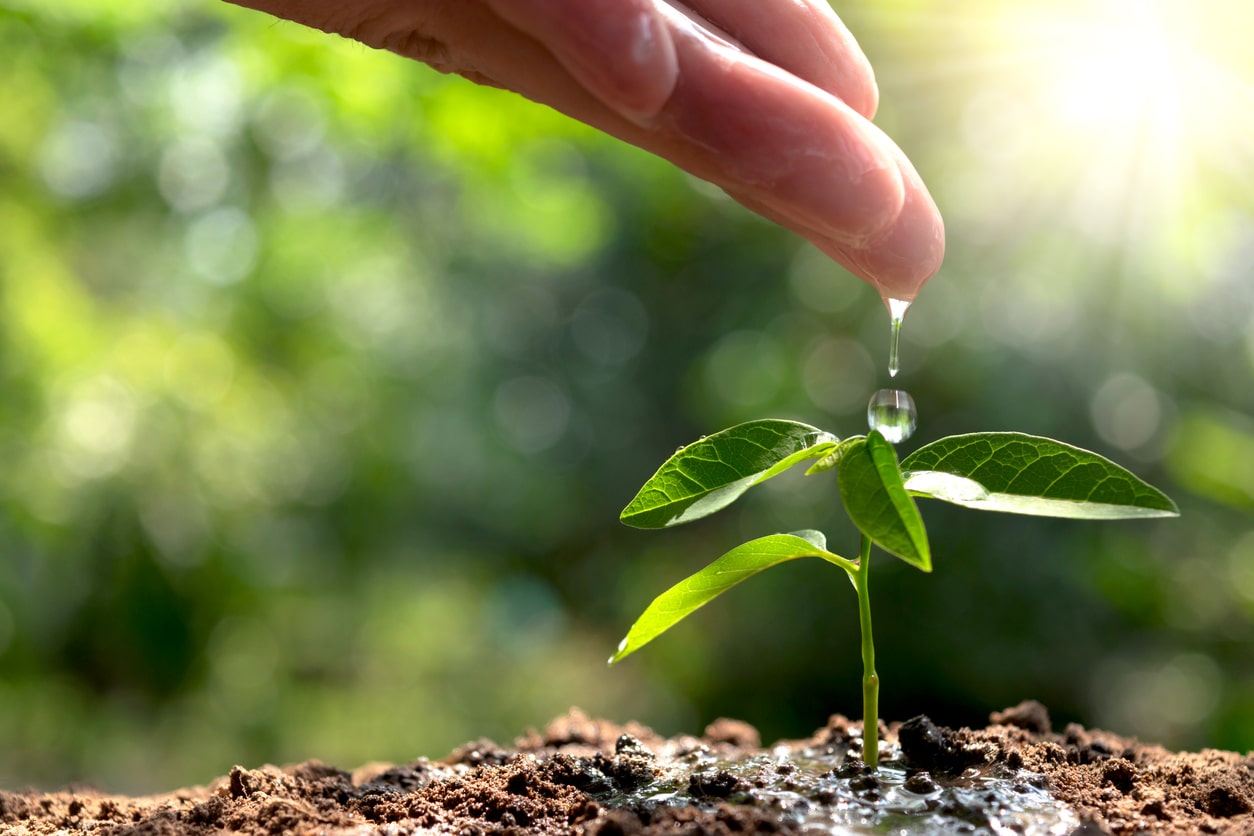
Be More Biofriendly With These 10 Water Conservation Tips

Depending on where you live, you may be aware of the extreme drought many areas are currently experiencing. As water conservation is so key in this day and age, this month’s Biofriendly DIY is going to focus on 10 water conservation tips you should employ starting right now. When used, these tips can help you save water and become more biofriendly in your overall life.
1. Run Water-Using Appliances Only With a Full Load
Water-using appliances, like the dishwasher and washing machine, should only be run once you have a full load. This will help save water and energy. In addition, be sure to use these appliances during off-peak hours to help save yourself a little money, too.
If you have to wash dishes in between dishwasher use, fill up a basin less than half way with hot water, add a little dishwashing soap, scrub the dishes in the bin, rinse the suds off with water (run over the bin) and then hand dry. Your used, aka gray water, can be re-used to flush toilets or water your plants.
2. Collect and Utilize Gray Water
Gray water (also spelled grey water) is basically water you’ve already used once. As an example, when you’re taking a shower or if you wash a few dishes by hand, you can collect gray water in a bucket which can then be used to water your plants, the flowers in your garden or trees in your yard. Doing this is a simple way to conserve water and make the most of what you have. Be sure to follow state and local guidelines on the use of gray water in your area.
3. Avoid Leaving the Faucet Running
Leaving the faucet running while you scrub dishes in the sink, brush your teeth or wash your face/body can actually waste quite a bit of water. A more biofriendly choice would be to turn off the faucet once you’ve wet the dish, wet your toothbrush or wet your body. Then scrub away, only turning the water back on to rinse things off.
An even more biofriendly action would be to avoid pre-rinsing dishes (just stick them in the dishwasher) and brush your teeth while you’re showering.
4. Fix Household Leaks Right Away
Speaking of running water…did you know a leaky faucet can waste an estimated gallon of water a day? That’s based on a “typical leak” which flows at a rate of about 10 drips per minute. According to the EPA, 10% of homes with leaks waste 90 gallons or more per day. That’s a big number, especially considering many states are facing serious drought conditions. So, make sure you check for leaks right away and fix any you find.
5. Add, and Regularly Clean, Faucet Aerators
Adding faucet aerators is a simple, yet effective, way to reduce water usage. A flow-restricting aerator can help make the flow of water coming from your faucet far more productive. This doesn’t mean you’ll have less pressure, it simply means less water will come out of the faucet while it is in use. So, having a faucet aerator can help you reduce water waste. Be sure to clean your aerator regularly though to prevent blockage and maintain water freshness.
6. Set Up a Rainwater Harvesting System
Providing your area allows, (yes, believe it or not, some areas don’t allow residents to harvest rainwater), I recommend you set up a rainwater harvesting system. Rainwater harvesting is something people all over the world have been doing since ancient times to capture and store water. Harvesting rainwater is a great way to save money, conserve water and yet still be able to water your garden, flush your toilets, wash your car and more.
7. Try Xeriscaping Your Yard
Xeriscaping is a term which means low water using. Xeriscaping is ideal during a drought as, when you xeriscape, you are taking steps to make sure your garden and yard will be as water-efficient and drought-tolerant as possible. The seven principles of xeriscape are simply: 1) water-wise planning and design, 2) low water-using plants, 3) limit grass areas, 4) water harvesting techniques, 5) efficient irrigation system and design, 6) mulch and 7) proper maintenance. Reach out to your local nursery if you need information on drought-resistant plants or other xeriscaping ideas.
8. Water Your Yard In the Early Morning Hours
Depending on the area in which you live, you may already have water restrictions in place to help conserve water and minimize the effects of the drought. Regardless, you should consider watering your yard only during the early morning hours of the day. This is especially true if your yard still has grass which needs to be watered. Watering in the cooler, morning hours, before the sun has fully risen, can help reduce evaporation and optimize water absorption.
9. Set Up An Automatic Water System for Potted Plants, Too
Automatic water systems, like DIY drip irrigation systems, can be set up both outdoors and indoors for your potted plants, too. The benefit of this type of system is it allows your plants to be watered using a minimal amount of water and maximizing conservation. Although people generally associate drip irrigation with outdoor plants, even indoor plants can be set up with self-watering systems which, in all honesty, takes the guesswork out of plant maintenance.
10. Minimize Washing Outdoor Areas
While you might have considered hosing down the outside of your house, driveway, sidewalk or car in previous years, now is not the time to do these types of activities. We need to conserve water. So, for example, instead of watering your driveway or porch, sweep it off instead. Rather than washing your car in the driveway using the garden hose, consider doing a waterless car wash. There are always biofriendly options available, you just have to think water conservation when weighing your options.
We’d love to hear what water-saving tactics you use at home. Feel free to comment below and share your water conservation tips.
2 Comments
-
Regina
Hey! That’s a very useful article – thanks. I just want to add a few more tips for pool owners. If you have a swimming pool, there are some things you can do to reduce your water consumption:
1. Identify and repair any leaks;
2. Minimize the pool water splashing out;
3. Lower the pool’s water level;
4. If your pool is heated, lower the temperature;
5. Backwash pool filters only when necessary.



Olivia
Good ideas! May I also suggest installing eco-friendly plumbing fixtures? For example, a high-efficiency toilet. Older toilets can use up to 7 gallons a flush. Most high-efficiency toilets use only 1.5 gallons of water per flush or even less. Plus, they last much longer – up to 30 years.